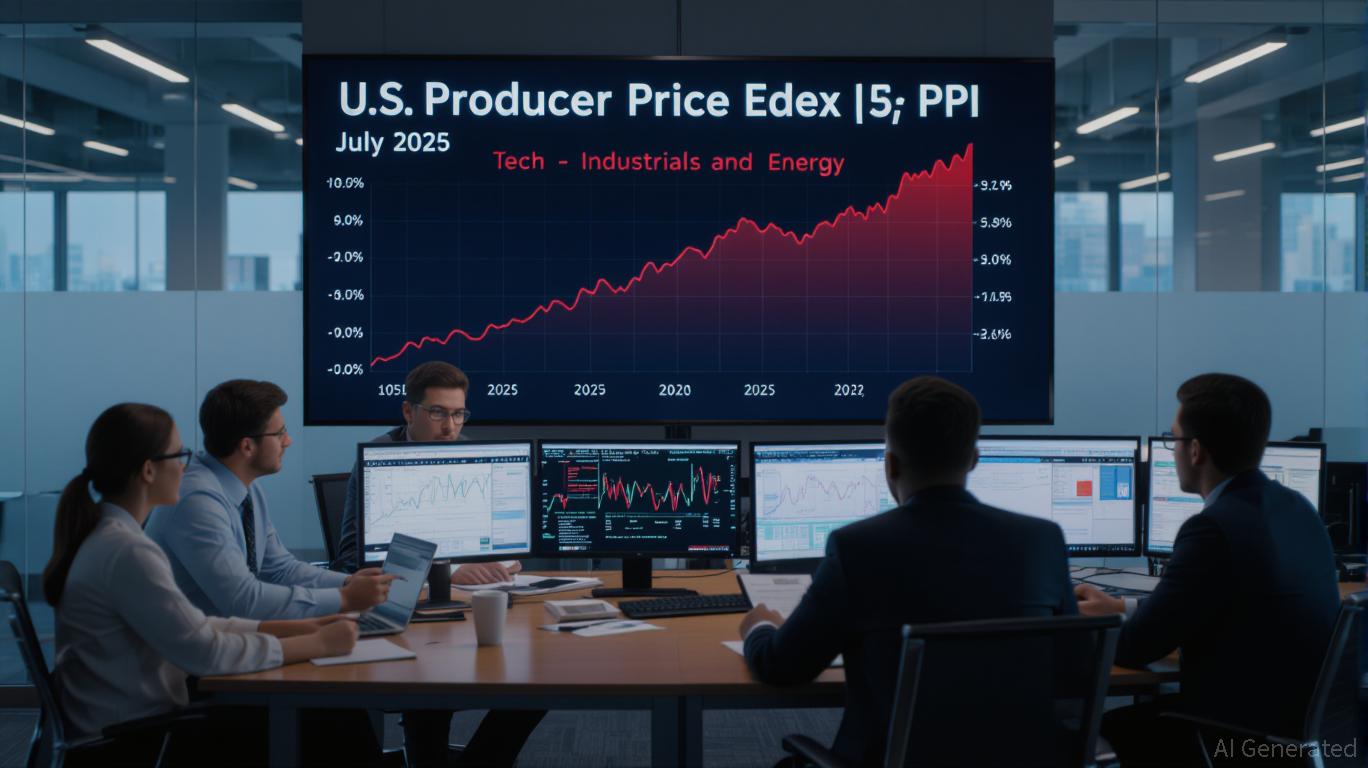
The U.S. economic landscape in July 2025 is marked by a sharp resurgence in inflationary pressures, as the Producer Price Index (PPI) for final demand surged 0.9% monthly and 3.3% annually—the largest 12-month increase since February 2025. This data, far exceeding economists’ forecasts, underscores a stubborn inflationary environment driven by both goods and services sectors. For investors, the implications are clear: the Federal Reserve’s policy calculus has shifted, and market positioning must adapt to a world where inflation is no longer a distant threat but a persistent force.
The Fed’s Dilemma: Inflation vs. Growth
The July PPI report revealed a broad-based inflationary surge, with services inflation—particularly trade services and machinery wholesaling—accounting for over half of the monthly increase. Core PPI, excluding volatile food and energy, rose 3.7% annually, the highest since March 2022. This challenges the Fed’s dual mandate of price stability and maximum employment. While the market had priced in a near-certainty of a September rate cut, the PPI data has reduced the probability of a 25-basis-point cut to 92.5% and eliminated the likelihood of a 50-basis-point cut. The Fed now faces a critical choice: delay rate cuts to combat inflation, risking a slowdown in growth, or ease policy prematurely, risking a reacceleration of price pressures.
Sector Rotation: From Tech to Industrials
Historical data from 2000 to 2025 reveals a consistent pattern during high-PPI environments: sectors with pricing power and cyclical exposure outperform. In the current climate, industrials and materials have emerged as top performers. Industrial firms, particularly those in logistics, equipment manufacturing, and infrastructure, benefit from inflation-linked demand and resilient cash flows. For example, machinery and equipment wholesalers saw a 3.8% price surge in July, contributing significantly to the services inflation spike.
Conversely, growth stocks—especially in the tech sector—face valuation headwinds. The Nasdaq 100 E-Mini, heavily weighted toward rate-sensitive tech equities, has historically shown a negative correlation with PPI surprises.
Commodity Trends: Energy and Gold as Inflation Hedges
Commodity markets reflect the dual forces of inflation and monetary tightening. Energy prices remain a key driver, with diesel fuel surging 11.8% in July, while gasoline prices fell 1.8%. This divergence highlights the importance of hedging strategies for transportation and manufacturing sectors. Energy producers, particularly those with strong balance sheets, are well-positioned to capitalize on sustained demand.
Gold, a traditional inflation hedge, has…
Read More: Navigating Equity and Commodity Markets in a Tightening Policy Environment



